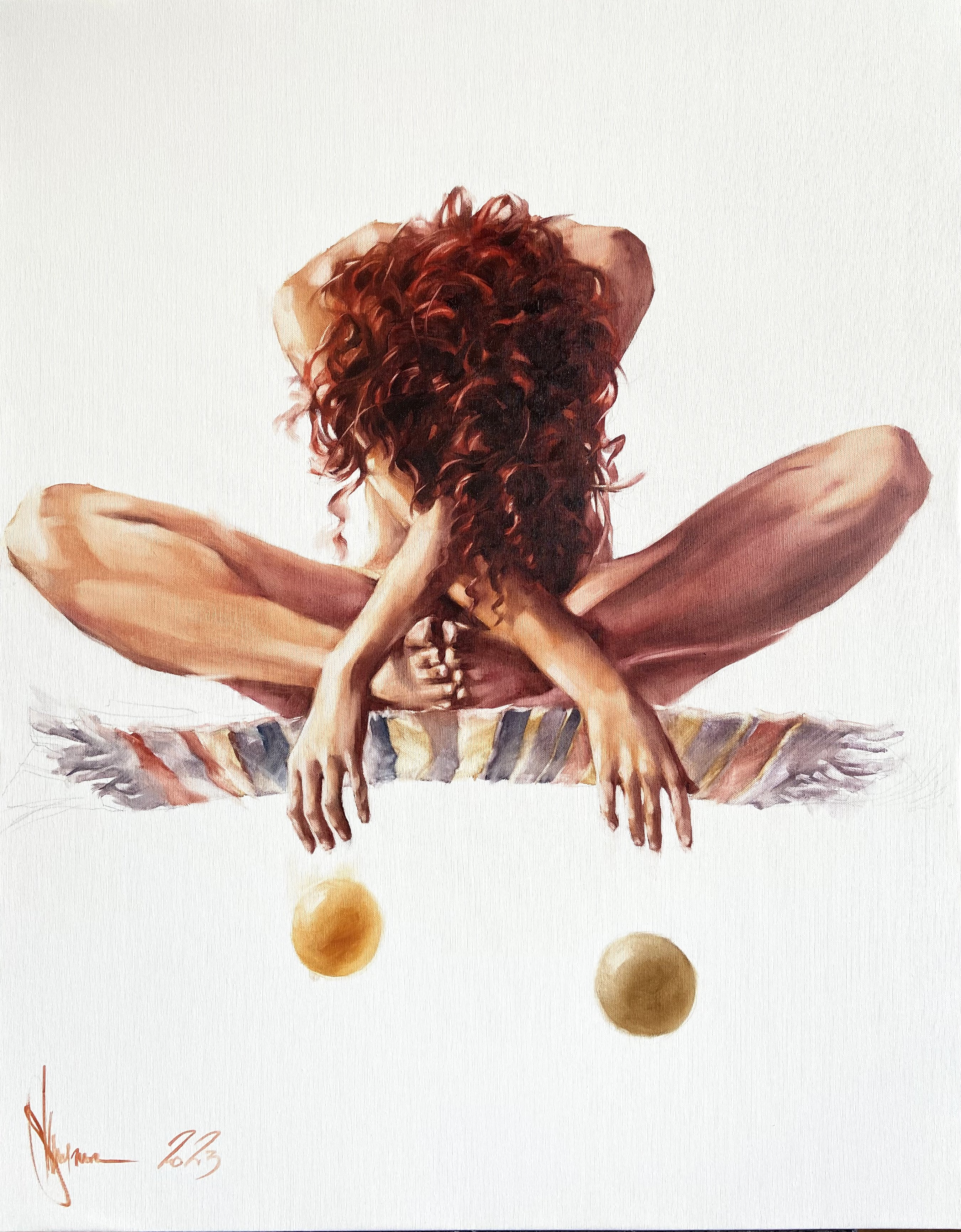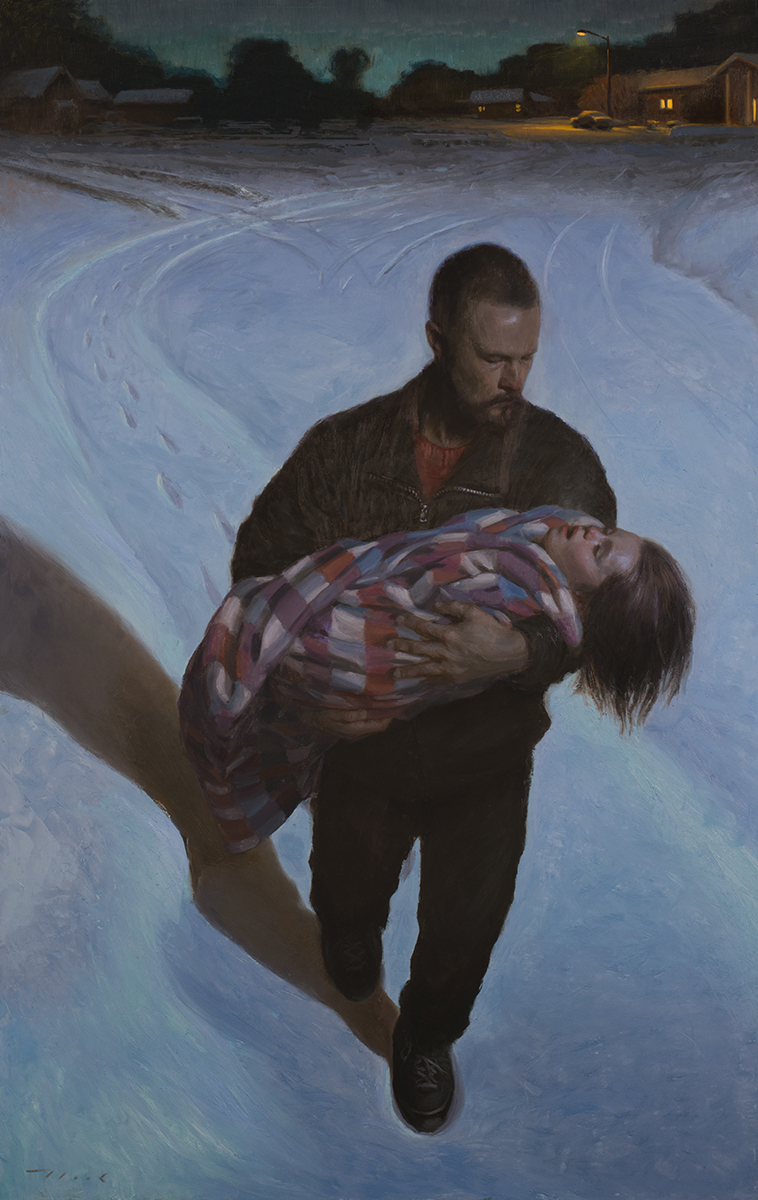The Evolution of Art: A Comprehensive Guide to Figurative Oil Painting
The Evolution of Art: A Comprehensive Guide to Figurative Oil Painting
Blog Article
The Development of Figurative Oil Painting: Recognizing Its Historical Relevance and Modern Interpretations
The development of figurative oil painting offers as an engaging lens with which to examine the interaction between creative expression and historical context. Contemporary artists, drawing from this abundant heritage, are now reinterpreting the human number in means that challenge traditional narratives.
Origins of Metaphorical Oil Painting
The beginnings of figurative oil paint can be traced back to the early Renaissance in Europe, especially in the 15th century. The development of oil paint allowed for better deepness of color and detail, boosting the realism and vibrancy of their job.

In this transformative period, figures were commonly portrayed within contextually rich environments, showcasing not just their physical attributes but likewise their mental states. Leaders such as Jan van Eyck and Titian took advantage of the medium's flexibility, employing layering strategies to accomplish luminance and structure. This advancement assisted in the portrayal of complex materials and the nuances of skin tones, adding to the growth of portraiture and narrative scenes.
Furthermore, the Renaissance emphasis on humanism fostered a recognition for individuality, which consequently influenced artists to create even more vibrant and relatable numbers - figurative oil painting. Therefore, metaphorical oil painting became an effective vehicle for narration and psychological involvement, laying the foundation for future imaginative movements and designs
Key Historic Motions
Substantial historic motions have formed the advancement of figurative oil painting, each adding unique approaches and techniques that broadened the tool's opportunities. The Renaissance noted a turning point, highlighting realistic look and the human form, with artists like Leonardo da Vinci and Michelangelo pressing the boundaries of physiological accuracy and perspective. Following this, the Baroque age brought significant contrasts of light and shadow, exemplified by Caravaggio, who infused spiritual motifs with extreme emotionality.
The 19th century introduced Romanticism and Realism, where artists such as Delacroix and Courbet challenged timeless suitables, concentrating on individual expression and daily life. The development of Impressionism better revolutionized the medium by stressing the results of light and color, bring about a separation from traditional depiction.
In the very early 20th century, activities like Expressionism and Cubism redefined figurative paint through abstraction and the expedition of psychological deepness. Each of these movements not only mirrored the social modifications of their times but also prepared for contemporary analyses. The interaction between these historical motions has developed an abundant tapestry of styles and philosophies, influencing modern artists in their pursuit of recording the human experience on canvas.
Methods and Materials Evolution

Throughout the Baroque period, strategies such as chiaroscuro and sfumato emerged, boosting the psychological vibration of metaphorical make-ups. Artists began to trying out glazes and impasto, manipulating structure and luminance. By the 19th century, innovations like making use of pre-mixed paints in tubes reinvented accessibility, enabling artists to repaint en plein air and capture the fleeting effects of light.
The 20th century witnessed the introduction of synthetic pigments and mediums, a fantastic read which expanded the palette and modified the uniformity of oil paints. The expedition of new application techniques, such as palette knives and brushes of varying stiffness, more diversified artistic expression. Jointly, these developments reflect the evolving partnership in between materials, techniques, and the imaginative vision intrinsic in figurative oil painting.

Contemporary Analyses
Contemporary analyses of figurative oil paint reflect a vibrant dialogue between practice and advancement, where artists challenge developed standards and explore varied themes. This development manifests in different means, as modern artists blend classic strategies with modern ideas, often dealing with social, political, and personal narratives.
Numerous professionals attract ideas from historic jobs, yet they instill their items with modern point of views, using the human type as an automobile for discourse on gender, identity, and culture. Artists progressively trying out abstraction, distortion, and multimedias, which enables for a broader analysis of the number and its context.
Furthermore, the usage of vivid shade palettes and unusual make-ups usually offers to disrupt standard seeing experiences, prompting vital interaction from target markets. This change in emphasis prolongs beyond aesthetics; it shows a growing awareness of the intricacies of human experience in an interconnected globe.
As metaphorical oil painting remains to advance, it continues to be a crucial medium for checking out the subtleties of contemporary life, embodying both a regard for heritage and a commitment to modern thought. The outcome is an abundant tapestry of expression that reverberates with the complexities of the contemporary human condition.
Influence On Modern Art
The influence of figurative oil paint on contemporary art is extensive, additional info as it has actually constantly inspired a myriad of artistic movements and practices throughout the 20th and 21st centuries. From Expressionism to Surrealism and past, the exploration of the human figure has actually continued to be a main style, allowing musicians to communicate intricate emotions and narratives. This emphasis on figurative representation has brought about a re-examination of typical techniques, leading to innovative strategies that mix realistic look with abstraction.
In addition, contemporary musicians have actually welcomed metaphorical oil painting as a method to resolve social and political issues, using the tool to challenge understandings of culture, sex, and identification. The rebirth of passion in figurative operate in recent years mirrors a wishing for link in a significantly digital world, where human experience and feeling are paramount.
Additionally, the discussion between metaphorical oil painting and modern art is noticeable in the jobs of musicians such as Kehinde Wiley and Jenny Saville, that attract on historic recommendations while infusing their pieces with contemporary relevance. Eventually, figurative oil painting remains to shape and redefine modern artistic expression, emphasizing its enduring importance in the art globe.
Conclusion
The development of figurative oil painting emphasizes its historic relevance and versatility across numerous creative motions. Inevitably, figurative oil painting continues to be a vital tool for checking out the human experience, resonating exceptionally in today's digital landscape.
The evolution of metaphorical oil paint serves as an engaging lens via which to check out the interaction in between imaginative expression and historic context.Substantial historic motions have actually shaped the evolution of metaphorical oil paint, each contributing special approaches and methods that expanded the medium's possibilities.As historical movements formed the trajectory of figurative oil painting, the materials and strategies utilized by musicians have actually additionally undertaken considerable improvements. figurative visit here oil painting.The influence of metaphorical oil paint on contemporary art is extensive, as it has consistently motivated a myriad of creative activities and practices throughout the 21st and 20th centuries.The advancement of figurative oil painting highlights its historical value and adaptability across numerous imaginative motions
Report this page